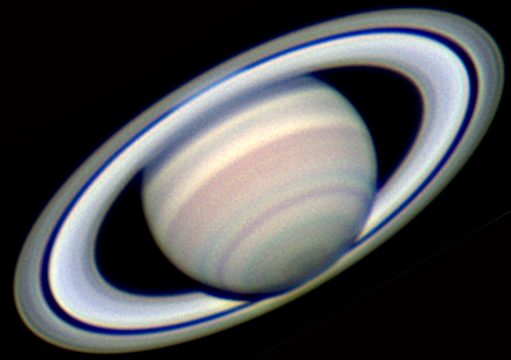- 2021-09-14
20th century planets
While organizing old CDs, a digest image of a 20th century planet came out. It is a combination of 32 cm newtonian+ cooled CCD (Teleris). In the era when there was no digital camera for astronomical colors, all colors were RGB composites. It was around the time when the Great Red Spot on Jupiter was pale. The quality is one rank lower than it is now, but I remember the bright vitiligo that looked like Saturn’s EZ.

